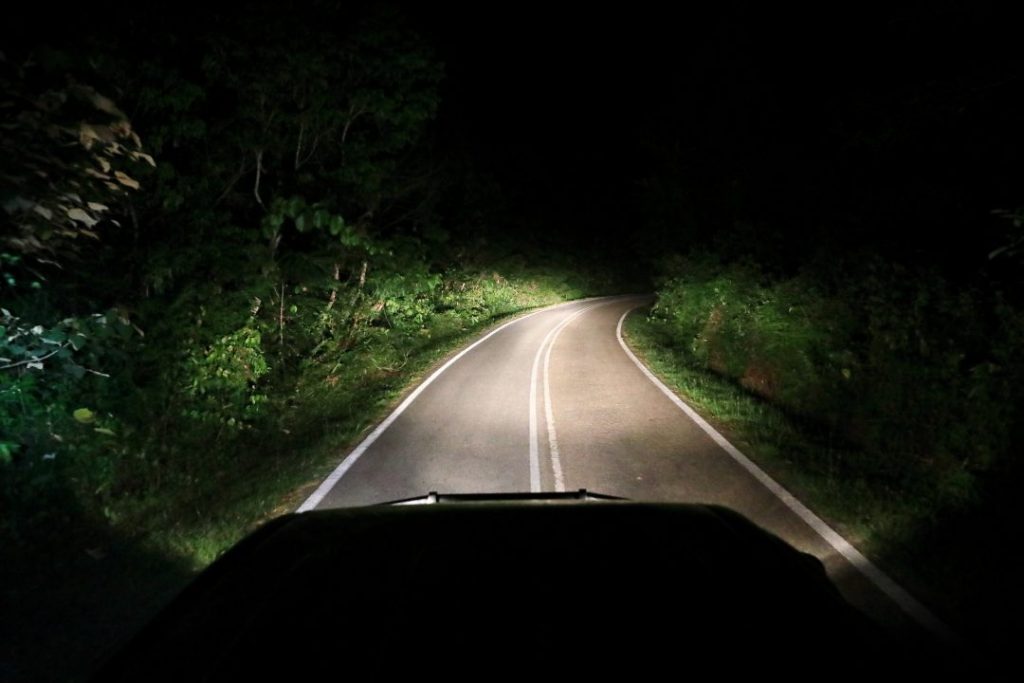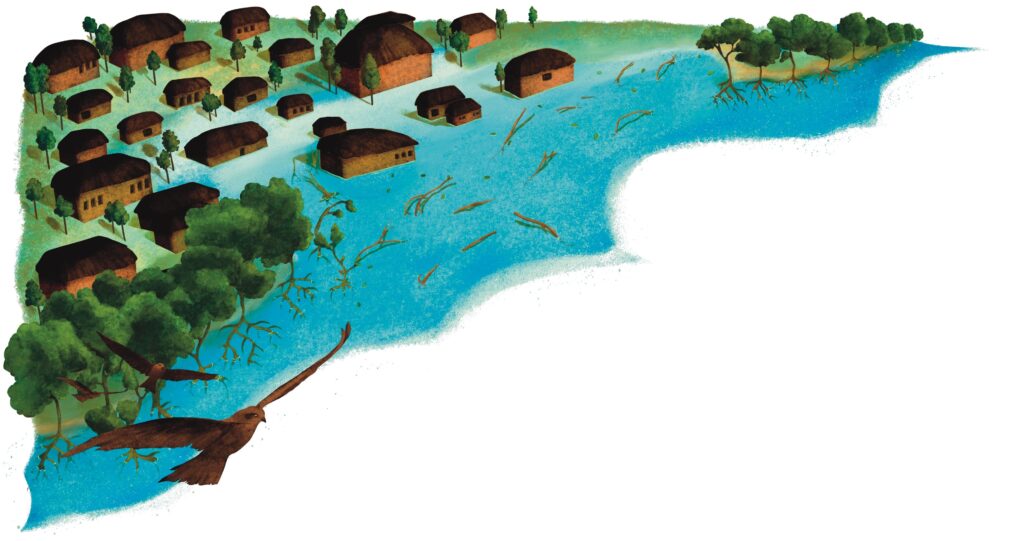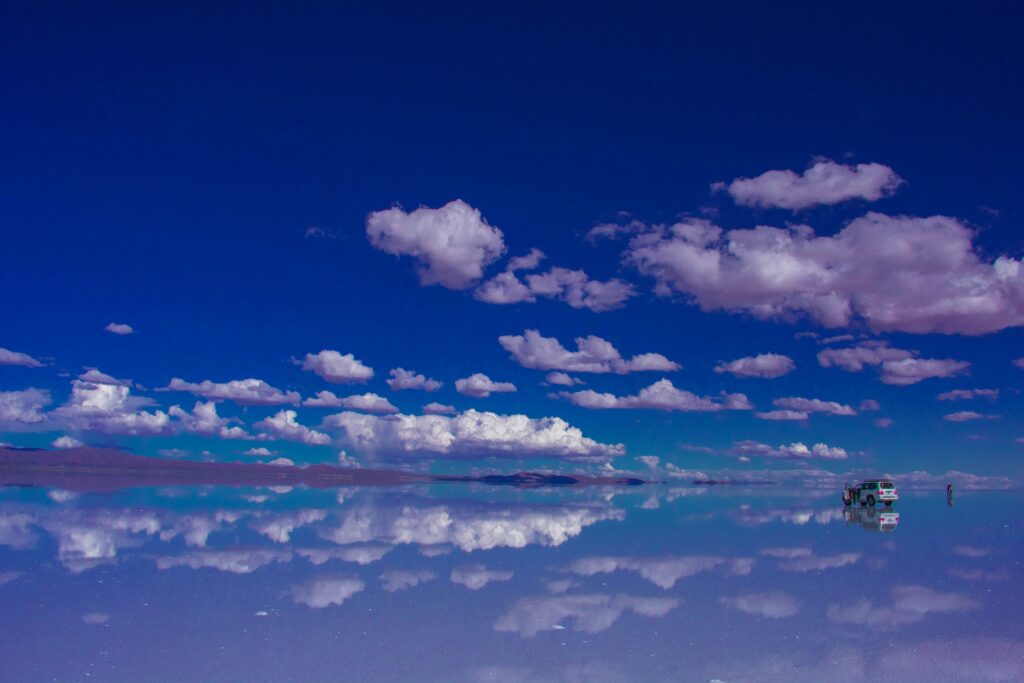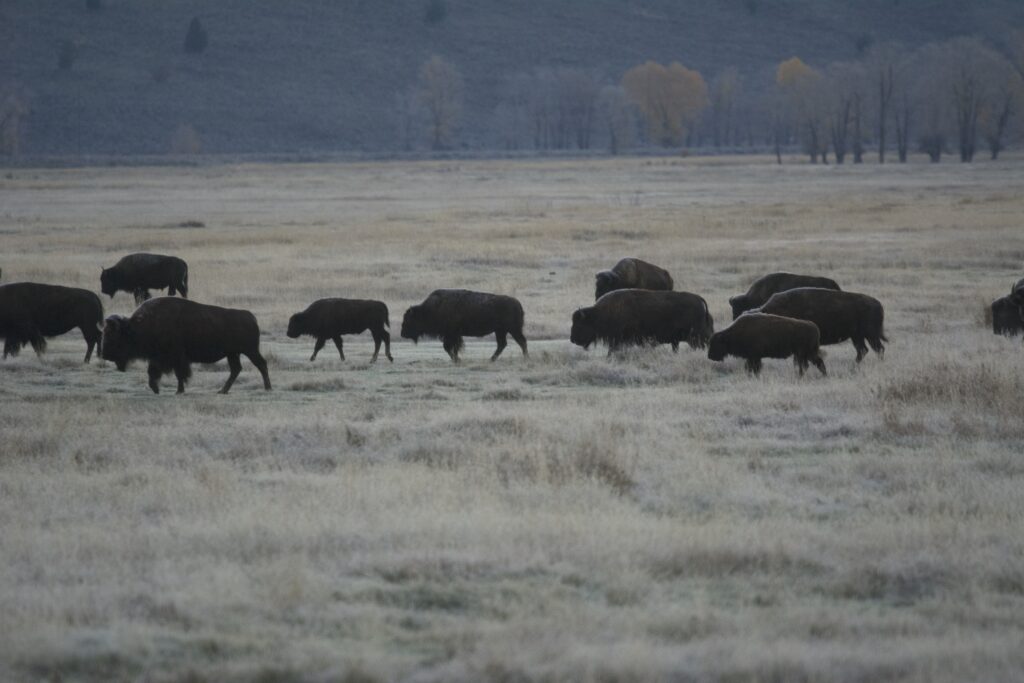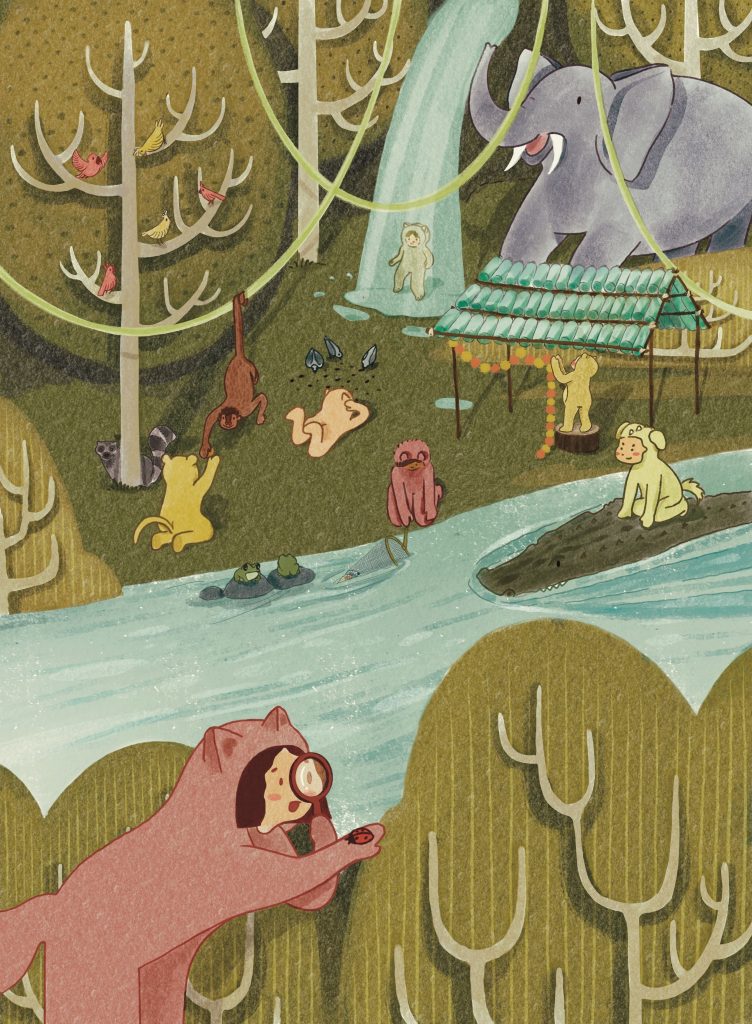In this interview, the author of ‘Trees of Delhi’ narrates some of the challenges he faced while sharing the exciting moments in his pioneering work of the last six years, creating the Rao Jodha desert rock park. Centuries of degradation, grazing and neglect, followed by a misguided attempt to green the landscape with Prosopis juliflora, an invasive Mexican species had sent the native flora into retreat.
JL: When did you start planting?
PK: 1 April 2006 was our start. We started the nursery a month or so earlier with a very contracted range of mostly trees and shrubs. We found a forest nursery with only about five species we could use. So we had April, May, June before the rains came. And we managed to grow some 14, 15 species. We chose a linear patch of about a hectare, where the thickest mesquite was, above the lake in Jaswant Thada , and we chose another three-quarters of a hectare near Ranisar. We said let’s just do all our learning and make all our mistakes in these two plots. That’s all we had time to clear, anyway. The Khandwalias removed the mesquite and we were shocked at how much soil we needed to fill the pits. We had donkeys going back and forth with panniers of soil. We were varying the soil mixtures so we could understand how soil affected things. We planted with these limited numbers of species but in fairly high numbers that first year.
JL: How many species have been planted?
PK: Probably just over a 100, by now. When we were numbering pits for the first three years, we crossed 7000 or 8000 large pits. I wouldn’t be able to say how many thousands now. If you count the little things, it goes into many, many thousands. Now we are getting more and more into the little things with a huge emphasis on grasses because all the big things, like trees and large shrubs, are already in place.
JL: Did you try to protect trees and plants from hares and porcupines?
PK: We’ve accepted hares, porcupines and pigs. The damage hasn’t been great. It’s not big enough for us to worry about. Wild boars were sometimes a problem. Feral dogs are sometimes a nuisance. If you have a pit with sandy or soft soil in the pit, this is an ideal place for them to litter and then the plant is quickly destroyed. We solved the problem by mulching with stone. If you raise the size of the aggregate, then dogs don’t want to nest there anymore.
 Janaki Lenin
Janaki Lenin
JL: Would you call mesquite a pioneer or an usurper in this landscape?
PK: It’s both, it doesn’t have to be an either/or. Its seeds were scattered here from an airplane in the 1930s. Not just here but over an extensive part of the old kingdom of Jodhpur. You can assume that it was fairly evenly scattered, and that it found purchase only in those spots where it could find the cracks. So it starts as a pioneer and it doesn’t just out-compete other things, it secretes alkaloids in its root zone that discourage anything else from growing there. It practices allelopathy which is one of its strategies. So once it gets in, it creates a pure crop. It’s as invasive as you can get.
JL: It’s a pioneer for your planting. It told you where to plant.
PK: I always try to acknowledge that. In an ecosystem like this, if you were to give me a habitat shorn of mesquite and said, “Plant it up,” I’d be hard put to think of where to plant new things. Do you plant wherever you think there might be a little pocket of soil? Do you plant wherever you see a little bit of a crack? How do you identify the precise planting places? It’s not easy. But mesquite had done that work. It’s possible to make the assumption that mesquite had done all the basic work of finding out where it was possible to grow. In the places it was absent, it was too difficult to find purchase. We took the decision to follow mesquite’s lead casually but it turned out to be a very useful way of proceeding: only plant where mesquite has shown you it’s possible to grow.
JL: Did you face any unforeseen challenges besides the ones you anticipated before taking on this job? Janaki Lenin
Janaki Lenin
PK: Well, you know what happens, you tend to start with a lot of bravado and then a moment of doubt creeps in. That first year we started, we had only a short lead time into the monsoon. When the Khandwalias cleared about 2 hectares of mesquite, suddenly this area which was thick with thorny mesquite was now reduced to empty pits. I thought, “Great! We’ve removed the mesquite but what if nothing else grows here? What if we don’t know how to do it? What if we don’t choose the right plants? We could end up with 70 hectares of pits and nothing to really take the place of mesquite.”That’s a scary thought! After all, you are not doing something that has a track record, you can’t consult people who’ve already done it. There are no books to learn from. We could fail! That was the big fear. Collecting plants, seeds, and germinating them had its problems but we overcame them. The biggest challenge is ahead of us, which is to grab the attention of people and excite them, engage them, with all that is enjoyable about this park. I think that is going to be a much more intractable problem. But it’s one I look forward to.
JL: This place was badly degraded from grazing and over-use. Is it possible that there was a top soil that was eroded?
PK: This part of Jodhpur is an outcrop of volcanic rock called rhyolite. Originally, many millions of years ago, the rhyolite would have been capped by sandstone. When did this all change? Who knows. What we do know is that wherever you see rhyolite in the desert today, it tends to have little or no top soil. Things that grow on rhyolite exploit the cracks and fissures in it. It is in those little linear cracks that you can get things growing. You’ve seen these huge euphorbias, which for us are one of the emblematic rock plants. We autopsied one to see what its root structure was like. It has a very thin fibrous root and it exploits the cracks by forming a fan-like structure. Thousands of extremely thin, fibrous roots that don’t penetrate very deep but add up to a huge surface area. So it is brilliantly adapted to living in the cracks of rhyolite. My initial assumption was that if a plant is not a tiny herbaceous thing, it would have to have deep roots. Thhor—Euphorbia caducifolia—showed me that it was possible to have lots of thin, fibrous roots that could be just as effective as long, penetrative roots.
The cracks are actually very good at conserving moisture. The thinner the crack, the better it is able to protect the little soil in it from drying out. No desiccating air can reach it. In the month of May, we have taken rocks apart and about three, three and half feet below, inside a hairline crack, lies moist sand. It’s astonishing.
JL: So you did an analysis of the plant’s root system and the rock to understand how the system works before you actually did planting.
PK: I won’t say ‘analysis’, I don’t think we had the scientific training or the tools. We just did our best to understand something that we had no previous understanding of. You are dealing with an ecosystem where plants have amazing resilience, they must have amazing adaptations. And you need to understand what those adaptations are. Obviously it varies. Succulence is the best known way of dealing with drought. But a lot of trees like Acacia senegal,which is the charismatic tree of rocky desert areas, doesn’t have any succulence at all. But it has the ability for its roots to penetrate the cracks. In unprotected rock, unless there are cracks, almost nothing can grow there. Some of our rocky hillocks in the Park are completely bare, there is nothing at all growing on them. Once we understood how cracks and soil work, we would take some of the heavier clayey soil and dust the hillocks, hoping that the soil would penetrate every little possible crack. So we were accelerating something that happens naturally. When the wind blows this is what is happening, anyway. A lot of little things, not just grasses, are very happy growing in cracks. There’s a plant called Seddera which grows in some of the most inhospitable places, it just anchors itself in the thin cracks and luxuriates. It’s a very beautiful little bushy plant. And often you’ll see it growing in these linear cracks along a line because that’s how the crack spreads. So it just follows that line beautifully.
 Janaki Lenin
Janaki Lenin
JL: How did Professor M M Bhandari help you? What expertise did he bring?
PK: Bhandari sahib wrote ‘The Flora of the Indian Desert’ nearly 35 years ago. He is the taxonomic expert for plants in this part of the world. It was very important for us to rely on his expertise, especially in the beginning. For example, there are three kinds of Aerva, which are very important in the desert. Two of them tend to grow in sandy or gravelly habitats and only one will exploit rock, that too not as happily as it does in sand. They are quite hard to tell apart. It was terrific for us to be able to take it to him and ask “Doct saab, tell us how to distinguish between Aerva tomentosa and persica.” Or whatever!
On two occasions, we took him along on field trips out into the desert. He’d say, “I can’t walk at all, my knees are bad. I’ll have to stay in the car and direct you.” We wondered how this was going to work but his recall for physiographic features was amazing. He’d say, “Go around this hill, you’ll find a big rock and maybe it’s still splashed with vulture scat. Go down there and you’ll find some plants like this.” And invariably he was right! He’d done an enormous amount of exploring in his younger days, he was an excellent field botanist. To be able to count on his experience and knowledge of plants was a terrific advantage for us. His knowledge of the desert, the different kinds of microhabitats it has, and what you can expect to find in these areas was invaluable. He died last year. We are very sad we lost him because very often we come across something and we want to go to him. And now of course, we can’t.
JL: In the course of exploration, were there any tragedies? Like he had seen some plant twenty years ago and you go there and find the plant had disappeared.
PK: Not specifically. For example, there’s a plant called phog (Calligonum polygonoides). It is one of those wonderful desert plants that is now in retreat. Doct saab told us about attempts he had made in the past to tell the administration about conserving it and trying to make sure it doesn’t disappear. It is an important endemic plant in the desert. Becoming rare, but not endangered yet.
There’s a plant called Monsonia senegalensis. In our first year of collecting, we found 20 or 30 plants. We picked up three and they survived, they flowered and they even set fruit in the Jaswant Thada area. But it didn’t come up again the next year and we’ve never seen the plant again. It doesn’t mean the plant doesn’t exist. But we wouldn’t even know where to look for it now. We’ve kept our eyes peeled but haven’t seen it again. So we are going to have to discover it for ourselves afresh.
One of the great things about traveling with Doct saab was, for example, there’s a genus of small, weedy herbs called Tephrosia. Quite common. You can see it in Delhi on the Ridge. We passed through one sandy valley and we saw, from the distance, a grey-greenbush about seven or eight feet high. It turned out to be Tephrosia falciformis with beautiful large, bright pink flowers, only growing in that one little sandy valley. It seemed as if it was endemic to that one specific place. We managed to collect some seeds and propagate it. It is now growing in the visitor’s centre. This was one of the great joys of going out with with Bhandari saab. We could have learned all this by ourselves over thirty years, but of course he knew all this already. So it was wonderful. There’s only one other plant, other than Monsonia, that we haven’t been able to lay our hands on but we’ll get there. It’s a succulent called Caralluma edulis.
JL: What threatens some of these plants, like phog? Janaki Lenin
Janaki Lenin
PK: Phog lives in salty sand so it’s a halophyte, not a crack-dweller. The threat to phog is twofold: one is that the flowers make the most delectable raita. They are collected especially by the women folk in all the outlying villages in the desert and they make this raita, which is just the most amazing thing. It flowers in February. But the wood has got high calorific value and is lopped for fuel wood. That’s the big threat to phog actually. It’s not that phog is intrinsically rare, it’s just in retreat and you can see whole areas have been stripped of it.
JL: Any charismatic plant that you haven’t been able to find?
PK: We were very keen to get Ephedra, the only gymnosperm in the desert. We found it and propagated it successfully from cuttings. Some of these plants are doing very well. But they haven’t flowered and fruited yet. So we are not doing something quite right. Maybe it takes some years to flower. But no, there is no charismatic desert plant that is not already here.
JL: When you did your inventory, how many species did you come up with?
PK: It’s a difficult question to answer. If you count all the grasses, all the little species, we’ve got between 170 and 190 species now. At 220, we should be bumping our heads against the ceiling. There are some grasses we still need to collect. The challenge now is not so much looking for new species as much as learning how to work with species we know, especially grasses.
JL: Why is that?
PK: For aesthetic reasons. I want to be able to try and work with grasses like you paint with colours in a palette. They have beautiful textures, especially when seenen masse. Because grasses grow in groups, and not individually, you can actually do swathes, and you can have them mingle in particular ways and you can literally–well, maybe not quite literally paint with them. People in other parts of the world practice prairie-style planting in large meadows. We don’t have meadows here, but along the trails I want to work with grasses in special ways so the trails themselves become places of great beauty. The thing with grasses is, once you know exactly how to handle them, they respond so quickly. We need to learn lots more about them. We need to know not just how they grow and prosper, but also how they die. What becomes of them when they turn golden and brown. That’s an important part of the visual palette. I think grasses are the most exciting prospect for the future.
JL: When you were trying to figure out how to plant this area, you said you explored other rocky terraces. Give me an example of places you visited.
PK: One of the best known rocky areas is around Barmer town, about 200 kilometres away from here. A lot of the outcrops are unnamed places along the road. We’d literally set off and see a rocky area and drive towards it. At the right time of year, we’d pick up things we din’t know, press and take them back to Jodhpur. We’d take them to Dr Bhandari or look them up in his book. The rocky outcrops tend to be places where nobody is likely to farm and they tend not to be inhabited. The places that are sometimes inhabited are the slightly more gravelly piedmonts at the base of hills. Many of them don’t have names. Rocky parts are, in some ways, the poor cousins, parts of deserts that are not intrinsically valued for any reason. Not for water, not for soil, not for farming, not for anything.
 Janaki LeninJL: Why did you have to go 200 kilometres? What’s special about Barmer?
Janaki LeninJL: Why did you have to go 200 kilometres? What’s special about Barmer?
PK: Two or three different kinds of rocks for a start and very extensive rock.Very steep and relatively unspoilt hills. A convenient place to stay close by, in Barmer town.
JL: What discovery of plant during your exploration was the most exciting?
PK: The plant that gave me the most pleasure was a clonal forest. There’s a plant called Anogeissus sericea variety nummularia.We were driving to Nagaur, and in the distance we saw what looked like roughly 150-200 old, gnarled trees covering about three hectares. When we went close by, it was riven by seasonal nallahs with a small lake in the middle which was more or less dry. The soil was filled with lime granules. All these trees were very old and quite badly lopped for fodder. Very beautiful leaf structure. We didn’t know what it was and had to look it up. There was not a single young plant as you’d expect in a forest of that kind. I suspected it was a clonal forest. I can’t say for sure because I haven’t done a DNA test. But the chances are very high as the forest was propagated by suckers. It is one giant organism. It’s when the idea hits you that you realise, “Oh my God! You’ve got a huge, huge organism here.” We know that other species of Anoigeissus also form clonal forests, like pendula. So it is very likely this is doing the same thing. That was very exciting for me. We managed to use some of the suckers to make vegetative cuttings and reproduce them. So we have got some of these growing in the park.
I loved seeing Tephrosia falsiformis in that sandy valley because they are very beautiful. Because we don’t have sand in our park, we created one small sandy plot in one small part. We dug down and created a bowl, and trucked in salty sand to create a sandy exhibit. The other plant I really enjoyed discovering was Moringa conkanensis.I saw it for the first time growing on the crest of a sand dune. From a distance I wondered what it was. I asked a local and he named another desert tree which it didn’t resemble at all. We stopped the jeep, walked to the top of the hill. It turned out to beMoringa.At that stage it was almost completely bare, with very corky bark but its roots had been completely exposed because the sand dune had shifted. Clearly it had roots that ran many metres long. Some of the roots were sticking out like elbows. Subsequently, we’ve seen it in flower. Very beautiful. They are pure white with a beautiful tinge of pink. In our field guide, there is a photograph of them and I’ve said they are like birds in flight.
JL: So propagating plants wasn’t a challenge?
PK: Propagating has not been a challenge. There are a few species, may be just about four or five species that Vinod says, “I’ve managed to germinate them but I don’t know how to keep them alive.” Something is not right about how we’re doing it. We are trying to understand why this happens. We know that die-back is very important in the desert. Usually what happens is that a plant invests so much energy in its root zone that it can often look dead above ground. That’s when a gardener will typically say, “Oops! This one’s gone,” and chuck it away. So you have to be careful not to chuck away plants that look dead but aren’t really dead.
JL: Tree planters talk of scouring seed coats with acid, or eroding it on a hard surface before planting. Are there strategies like that you use?
PK: Yeah. Herbaceous plants have one very successful strategy which doesn’t involve any kind of physiological adaptations to the ecosystem. Instead, they live very short lives in that little window of opportunity when there is moisture in the soil. And the strategy involves rushing through their life cycle, producing hard-coated seeds, dropping them just as conditions become adverse and those seeds then remain in the ground until the next rains come. With these seeds, you basically need to soften the seed coat. We’ve never needed to use acid, but sometimes you just need to rub them on sand paper. Very often it’s enough to leave them in water overnight. At worst, pour boiling water on them and that will soften the seed-coat enough. People know how to handle the bigger leguminous things, like acacias, for example. There are no secrets there, really.
JL: Does anything have to pass through the gut of an animal?
PK: We haven’t found a recalcitrant seed yet that’s that difficult.
JL: You mentioned that Farsetiawas so endangered that it was found in only one place in India. Is there any plan to rehabilitate it like taking it out into the wild and repopulating the landscape?
PK: There should be. We got just a few plants of Farsetiaand in theory we could be thinking of rehabilitation. One of the problems is that if you plant anything in an unprotected area, it’s very hard to have any kind of reasonable confidence that it will survive on its own. So it’s a tricky thing. Often you’ll need to look after a plant for a few months at least. That’s hard to do. You are talking of sites 200-300 kilometres away. You’d have to look after it for three months, four months. That’s hard to do long distance.You were saying that Barmer was fairly remote. What would affect a plant in such a remote area that it’s in retreat? You’d have to know what the dangers were, what if anything was foraging on it. In our experience if you put the plant in the ground, if it is being introduced and it is not just coming up from seeds then there is certain amount of looking after that you have to do. If you don’t do, you are really minimising the chances of its survival.
 Janaki Lenin
Janaki Lenin
JL: Have you tried seeding a place?
PK: We’ve never been able to get Farsetiaseeds in that quantity. At best, we get about 10 seeds a year. Some don’t germinate. Quantities are too small.
JL: Grasses?
PK: Absolutely.
JL: Now that the park is open, what about the local people? How are you going to bring them into the picture?
PK: Don’t really have specific plans yet. It’s clearly very, very important for us to try and get this right. What we’ve already started doing, over nearly two years ago, is to engage with people from a residential area called Brahmpuri who walk through the park. They have a gate that leads directly into the Park. We want them to feel they can do this, that they are not being excluded. So whenever I’ve had an opportunity of meeting somebody, I’ve often tried to engage them in conversation, tell them what we are doing, make them understand the whole point of it. Many of them feel a tie with the land that goes back generations. They say “My father used to come here, my grandfather used to come here. We used to sit here.” We want to encourage that, we want it to be an important part of what we’re doing. One of the things I’m very keen on doing but don’t know how to do yet is to institute a system of voluntary guides or ‘docents’. Some people think the docent system may not work here. When you have a good docent system, you are tapping into reservoirs of enthusiasm that can be very infectious. If we can do that, it would be one of our best strategies to protect ourselves from the damage that people who are hostile to the park can possibly do. We have a temple next to us. The moment they are hostile to us and hostile to the park, we need to disarm that. We need to make them feel part of it. It’s not going to be easy. It’s not something I think I’m very good at. So we may need to bring other people to come in and do this for us. Other than the interpretation centre, we want to have a really good guiding system in place.
JL: Is there a way of taking the park out of the park? It’s also a conservation area. You don’t want a lot of people trudging up and down. So is there a way of taking it out of the confines of the park itself ?
PK: I don’t know. Of course what we want to do is confine people to trails which are clearly marked. I think the big challenge is how do you make something that people will respect, won’t treat as something that is not worthy of respect. When you are growing native plants, the problem often is that people will go through the landscape and will say, “What is this? Just jungly things?” With local people that’s often the problem. I don’t know how this is going to work really. I think guiding is really one of the keys. Vinod, for example. He himself is so enthusiastic, he’s telling people about the butterflies, the medicinal properties of the plants, their local uses and it’s very infectious. I’d love to institutionalise it, somehow.
Janaki Lenin is a freelance writer with a special interest in wildlife and conservation issues, janaki@gmail.com.









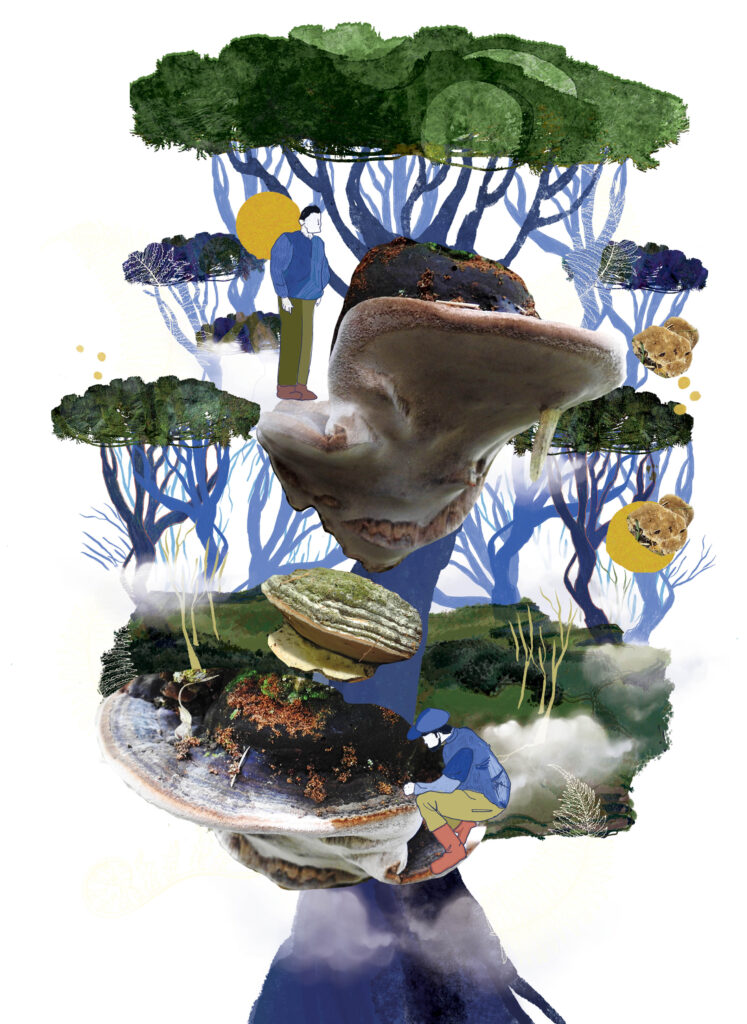
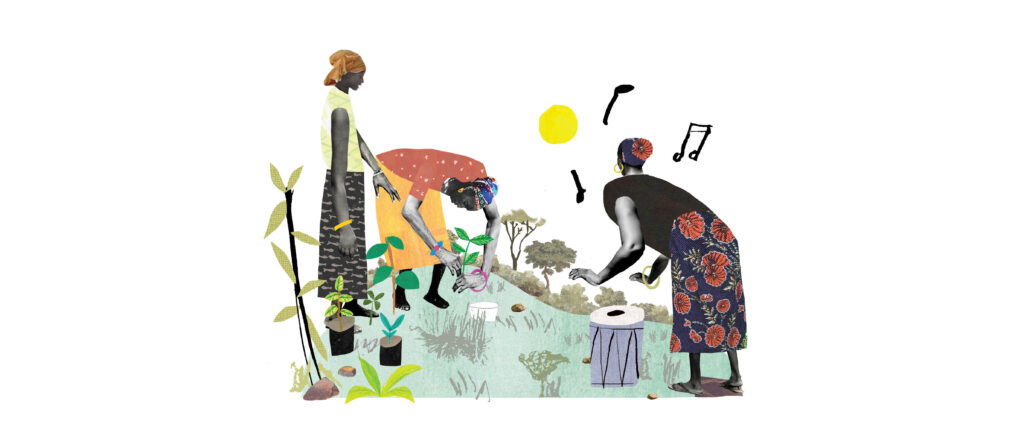
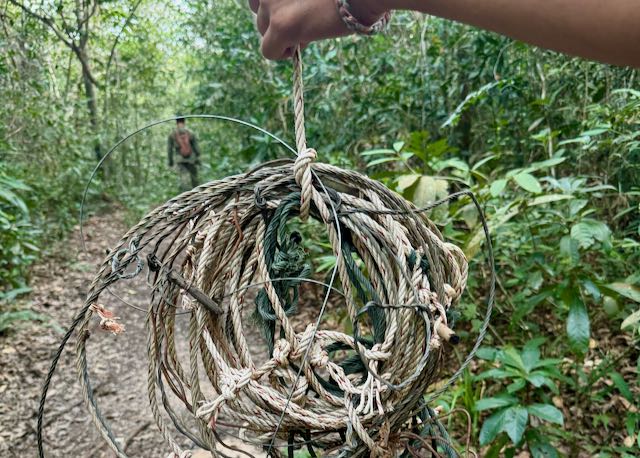

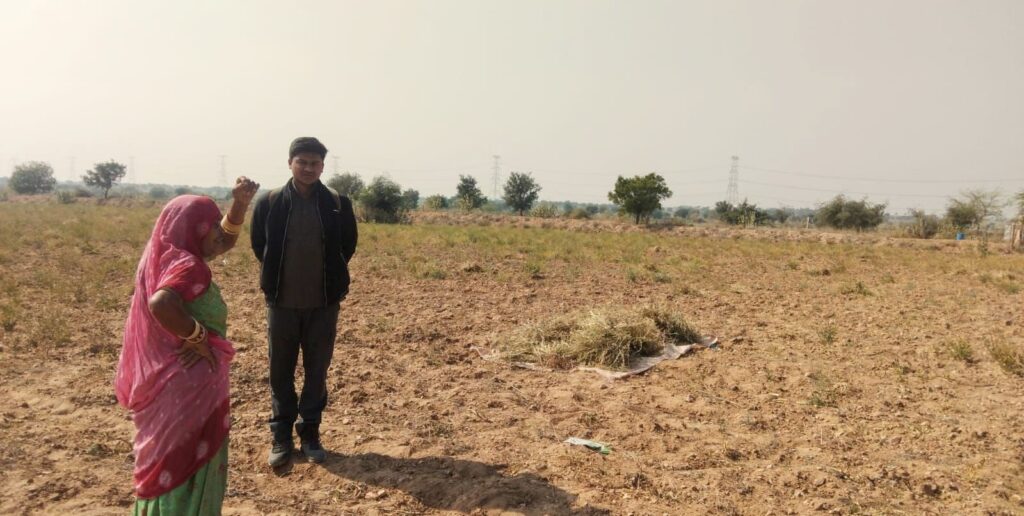





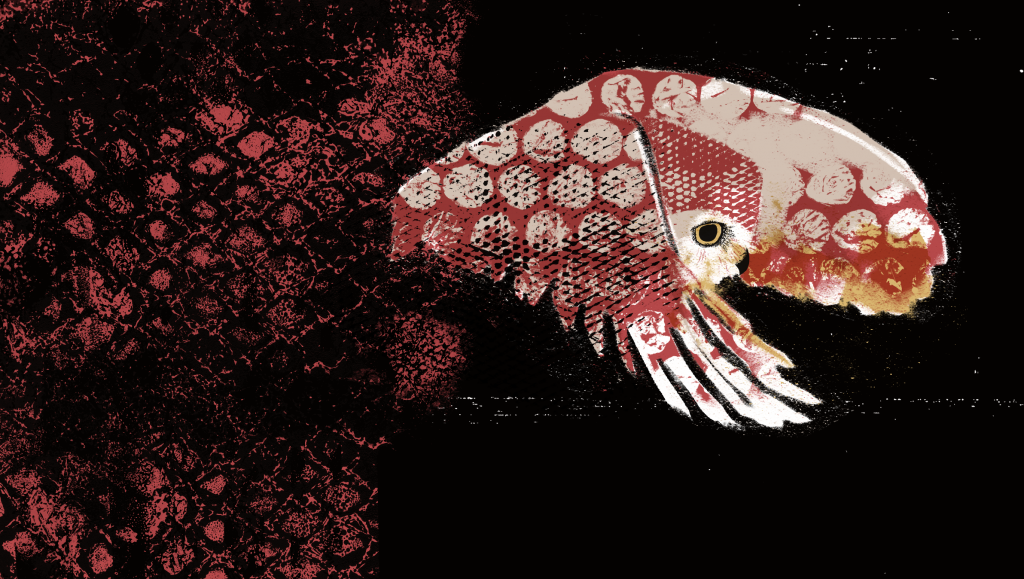























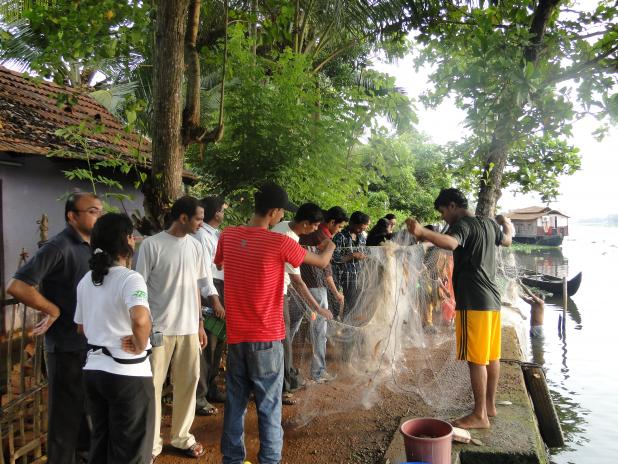 P. Dharma Rajan
P. Dharma Rajan





